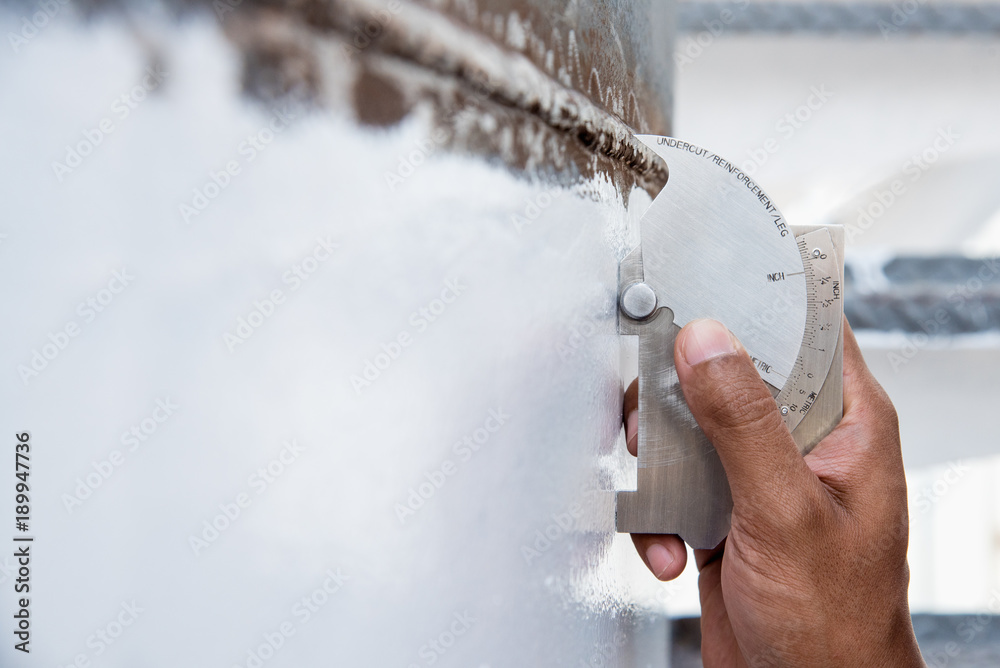How to Ensure Compliance with Tank Welding Inspection Standards
How to Ensure Compliance with Tank Welding Inspection Standards
Blog Article
A Thorough Summary of Storage Tank Welding Inspection Requirements and Methodologies for Improved Weld High Quality and Performance
The relevance of welding evaluation standards in the production of storage tanks can not be overstated, as they serve as the backbone for ensuring weld integrity and functional integrity. Numerous assessment strategies, including aesthetic analyses and advanced non-destructive testing methods, are vital in identifying prospective imperfections that can endanger efficiency.
Relevance of Welding Inspection Requirements

Welding examination criteria encompass a range of criteria, including material specs, welding treatments, and qualifications of employees included in the welding procedure. By implementing these criteria, organizations can systematically determine and correct potential issues, consequently lowering the chance of pricey repair services or devastating failings. Rigorous assessment practices promote a culture of responsibility and accuracy, urging welders to maintain high degrees of workmanship.

Typical Welding Evaluation Techniques


Ultrasonic Examining (UT) is one more widespread technique, utilizing high-frequency acoustic waves to find inner imperfections that might not show up externally. This technique is particularly reliable for identifying spaces or inclusions within the weld steel. Magnetic Bit Examining (MT) is additionally extensively utilized, specifically for ferromagnetic products, as it exposes surface area and near-surface issues through the application of magnetic areas and ferrous fragments.
Additionally, Liquid Penetrant Screening (PT) detects surface-breaking issues by using a penetrant to the weld and after that utilizing a developer to draw out the penetrant. Each of these methods adds to a comprehensive evaluation method, making certain that welds meet the stringent high quality requirements needed in tank construction.
Governing Specifications and Compliance
Regulatory standards and compliance are vital elements in making sure the safety and dependability of bonded structures in container building and construction - Tank Welding Inspection. These criteria offer to develop minimum needs for material buildings, welding procedures, and examination practices, consequently lowering the risk of architectural failings and boosting total performance
Trick organizations, such as the American Society of Mechanical Designers (ASME) and the American Welding Culture (AWS), offer standards that are extensively adopted in the market. Conformity with these criteria not only guarantees adherence to finest techniques yet likewise satisfies legal and legal obligations, protecting the passions of stakeholders.
Governing bodies click over here frequently mandate adherence to particular codes, such as ASME Code Area IX for welding credentials and API 650 for bonded tanks. These codes outline needs for welding strategies, certifications of employees, and testing methods to confirm weld stability.
Regular audits and inspections are crucial to maintaining compliance, as they help identify inconsistencies from established criteria. Non-compliance can cause significant penalties, job delays, and safety risks. Therefore, a robust understanding of regulatory standards and a commitment to conformity are extremely important in attaining high-quality and sturdy bonded storage tank frameworks.
Non-Destructive Evaluating Approaches
How can the integrity of bonded frameworks be guaranteed without causing damage? Non-destructive link screening (NDT) techniques provide a robust remedy, making it possible for assessors to evaluate weld high quality without endangering the material - Tank Welding Inspection. Amongst the most usual NDT strategies are ultrasonic testing (UT), radiographic testing (RT), magnetic fragment screening (MT), and dye penetrant screening (PT)
Ultrasonic screening employs high-frequency sound waves to identify internal problems and identify product residential properties. It supplies precise measurements and is especially efficient for thick materials. Radiographic screening includes passing X-rays or gamma rays with the weld, creating photos that reveal structural problems such as fractures or spaces. This approach is indispensable for assessing the stability of complicated welds.
Magnetic fragment testing is fit for ferromagnetic materials, where electromagnetic fields disclose surface and near-surface discontinuities. Color penetrant screening uses a liquid dye to highlight surface-breaking flaws, making it an effective approach for non-porous products.
Each of these NDT approaches has unique advantages, enabling extensive analyses customized to particular products and welding procedures. By implementing these techniques, industries can make certain the integrity and safety and security of welded structures, eventually improving total performance.
Enhancing Weld High Quality With Assessment
Efficient inspection plays a crucial duty in improving weld top quality, acting as a crucial checkpoint in the fabrication process. By identifying prospective problems early, examinations alleviate the danger of jeopardized structural integrity and make sure compliance with sector standards. Employing a mix of visual exams, non-destructive testing (NDT) approaches, and mechanical evaluations, assessors can find issues such as porosity, splits, and incomplete combination.
Carrying out a durable assessment method not just boosts the total top quality of welds yet additionally cultivates a society of responsibility amongst welders and fabricators. Routine training and certification of evaluation workers guarantee that they are geared up with the required skills to recognize and attend to potential problems successfully. This proactive strategy lessens rework and linked expenses, ultimately adding to forecast performance.
Furthermore, comprehensive documents of assessment findings gives valuable insights into persisting concerns, facilitating continual enhancement in welding practices. By leveraging innovative modern technologies, such as automated ultrasonic testing or electronic radiography, weld high quality can be enhanced with much more accurate examinations. Finally, a strenuous evaluation procedure is vital in attaining high-quality welds, ensuring safety, dependability, and long life in container manufacture.
Verdict
To conclude, the execution of strenuous tank welding browse this site assessment standards and methods is essential for guaranteeing weld honesty and performance. By using a mix of aesthetic assessments, non-destructive testing methods, and adherence to governing criteria, companies can efficiently determine and alleviate possible problems. Promoting a society of liability among welders even more boosts the top quality of welding processes. Ultimately, these methods add to decreased architectural failings, lower fixing prices, and improved operational efficiency within the market.
Report this page